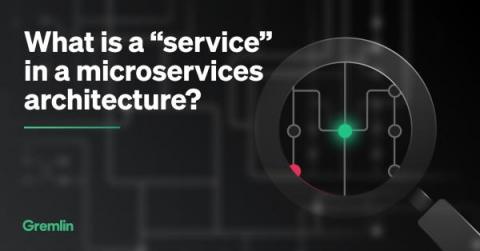Operations | Monitoring | ITSM | DevOps | Cloud
Microservices
Polyglot persistence vs multi-model databases for microservices
Microservice architecture is an application system design pattern in which an entire business application is composed of individual functional scoped services, which can scale on demand. Each team focuses on an individual service and builds it according to their skillset or language of choice. In addition to flexibility, this pattern provides: These features have made microservices architecture a popular choice for enterprises.
How to Effectively Scale Microservices in a Cloud-Native World
Mickael Alliel 5 Min read September 20th, 2022 DevOps Kubernetes
Consider these 9 microservices best practices to help you ditch your monolith
Distributed Tracing Observability in Microservices
Have you ever tried to find a bug in a multi-layered architecture? Although this might sound like a simple enough task, it can quickly become a nightmare if the system doesn’t have proper monitoring. And the more distributed your system is, the more complex it becomes to analyze the root cause of a problem. That’s precisely why observability is key in distributed systems. Observability can be thought of as the advanced version of application monitoring.
What is a "service" in a microservices architecture?
The past ten years marked a significant change in how software teams build and deploy applications. We moved away from bulky, slow, monolithic applications toward lightweight, scalable, distributed service-based applications. Meanwhile, tools like Docker, Kubernetes, and other container platforms helped accelerate this process. Despite this sudden growth, a fundamental question remains: what exactly is a service, and how does it fit into a microservice architecture?
Microservice Application Monitoring Tips and Tricks
Microservices have grown to become one of the most optimal alternatives to monoliths. However, just building your app and releasing it to the public isn’t everything. Monitoring microservices is as important as building and releasing them. You need to maintain it to resolve issues that may occur and also introduce new features from time to time.
Improve, enforce, and ensure microservice quality
Migrating Monoliths to Microservices in Practice
There have been amazing articles on the subjects of migrating from a monolith to a microservice architecture e.g. this is probably one of the better examples. The benefits and drawbacks of the architectures should be pretty clear. I want to talk about something else though: the strategy. We build monoliths since they are easier to get started with. Microservices usually rise out of necessity when our system is already in production.
Simplify microservice governance with the Datadog Service Catalog
Moving from a monolith to microservices lets you simplify code deployments, improve the reliability of your applications, and give teams autonomy to work independently in their preferred languages and tooling. But adopting a microservices architecture can bring increased complexity that leads to gaps in your team members’ knowledge about how your services work, what dependencies they have, and which teams own them.











